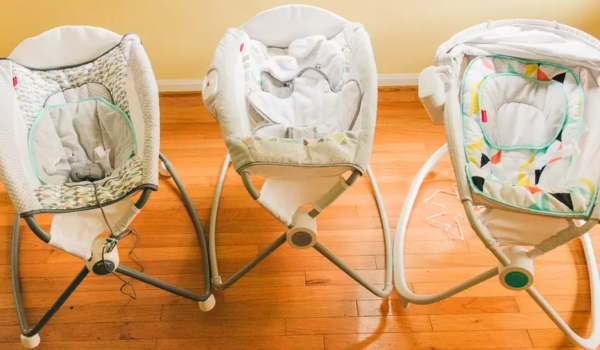The peaceful slumber of a newborn is a cherished sight for parents, often inspiring creative solutions to ensure their baby sleeps soundly. One such solution that gained popularity in the past was the Rock and Play sleeper.
However, concerns have arisen regarding its safety. In this article, we delve into the topic of newborn sleep in Rock and Play, providing crucial information on safety guidelines and alternative sleep options to keep your precious little one safe and sound.
Newborn Sleep in Rock and Play
Understanding the Appeal
Rock and Play sleepers, with their gentle rocking motion and cozy design, have been a go-to choice for many parents seeking to soothe their newborns into slumber. The elevated incline and snug fit mimic the feeling of being held, making it seem like an ideal solution for fussy babies.
Recent studies and recalls have raised red flags about the safety of Rock and Play sleepers. The inclined position of these sleepers poses a risk of positional asphyxia, where a baby’s head can slump forward, potentially obstructing their airway. This has led to increased scrutiny and concerns about their use.
Safety Guidelines for Newborn Sleep
The Importance of Safe Sleep
Safe sleep practices are paramount for newborns. To reduce the risk of Sudden Infant Death Syndrome (SIDS) and other sleep-related accidents, it’s crucial to follow safety guidelines recommended by pediatricians and experts in infant sleep.
Safe Sleep Guidelines
- Back to Sleep: Always place your baby on their back to sleep, both for naps and at night;
- Firm Sleep Surface: Use a firm and flat sleep surface, such as a crib mattress, with no soft bedding or pillows;
- Room Sharing: Share a room with your baby, but not the same sleeping surface, for the first six months to a year;
- Avoid Soft Sleepers: Avoid the use of sleepers with soft padding, inclines, or attachments;
- No Loose Bedding: Keep the crib free from loose bedding, bumper pads, and stuffed animals.
The Appeal of Rock and Play Sleepers
Understanding Parents’ Perspective
Parents are often drawn to Rock and Play sleepers because they seem to provide a calming environment for their newborns. The gentle rocking motion can help soothe a fussy baby, and the compact design makes it convenient for keeping your infant close by throughout the day and night.
Recognizing the Safety Concerns
Despite their appeal, the safety concerns surrounding Rock and Play sleepers cannot be overlooked. The inclined position, while providing comfort for some babies, raises the risk of potential breathing issues or positional asphyxia. This has prompted recalls and a growing consensus among healthcare professionals to discontinue their use for sleep.
Prioritizing Safety: Expert Recommendations
Pediatricians and child safety experts strongly recommend adhering to safe sleep practices to protect your newborn. These guidelines are grounded in research and are designed to reduce the risk of Sudden Infant Death Syndrome (SIDS) and other sleep-related accidents.
The Role of Parents
As parents, it is our responsibility to prioritize the safety of our newborns. This includes educating ourselves about safe sleep practices and making informed choices about sleep environments. By doing so, we can create a secure sleeping environment that allows our babies to rest peacefully.
Safe Sleep Alternatives
Traditional Cribs
Traditional cribs have stood the test of time as a safe and reliable option for newborns. They provide a flat, firm surface and meet safety standards to ensure your baby’s well-being. With a variety of designs and features, cribs offer a range of choices to fit your needs and preferences.
Bassinets and Co-Sleepers
For parents who want to keep their newborns close, bassinets and co-sleepers designed for safe sleep are excellent alternatives. These options allow you to have your baby nearby while providing a secure sleeping space that follows recommended guidelines.
Conclusion
The topic of newborn sleep in Rock and Play sleepers has garnered attention due to concerns about safety. While these sleepers may offer convenience and soothing benefits, it’s essential for parents to prioritize the safety of their newborns by following safe sleep guidelines.
Choosing alternatives like traditional cribs, bassinets, or co-sleepers designed with safety in mind can provide a secure sleeping environment for your baby. By making informed choices and embracing safe sleep practices, you can ensure that your little one sleeps soundly and safely.
